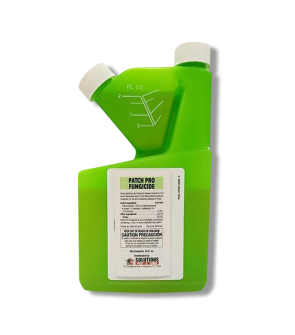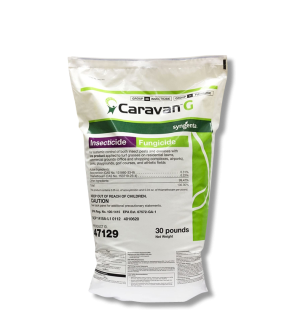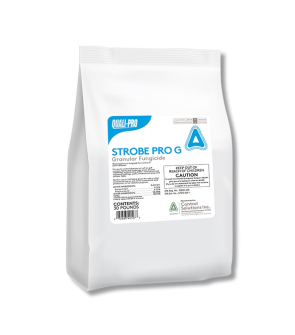Benefits of Using Fungicides
Most Effective Products
Benefits of Using Fungicides in Your Yard
All types of grasses are susceptible to fungi, which you will see when your turf is suddenly turning brown or other visible signs such as mushrooms or slime. Another thing you will quickly learn is once a fungi strikes your yard it can be hard to remove. After all, the most experienced gardener will have some difficulties removing these fungi's within their yard so do not become deterred when you encounter this yourself.
To effectively control your fungi infestation, you will have to begin a proper preventative treatment such as a fungicide. One of the main reasons for a homeowner like you to use a fungicide is to improve your lawns health by treating the current disease to prevent the growth of new or existing fungi.
As with any product there are pros and cons to using a fungicide. Fungicides should always be used with caution and applied properly according to the product label. Nevertheless, if used correctly fungicides can help you improve and maintain fungal attacks within your yard.
If you lawn is suffering from fungus-based diseases, but you are not sure whether you should use a fungicide then read this article. By reading this article, you can learn the benefits and cons to using a fungicide, if you should use a fungicide, as well as guaranteeing the safety of your own lawn against fungal diseases.
What are Fungicides?

Fungicides are a chemical product used to prevent or eliminate fungal diseases within your turf. They are one of the many products you can use in a lawn care program for the protection of plants or grasses. Specifically, fungicides work best when there is a present or underlying fungal disease within your foliage.
Fungicides will work in a variety of ways, but most of them will need to either make contact with the fungus on the surface of plant or inside the plant itself. Most fungicides will absorb into the leafy tissue of the infected plant and move through the plants vascular system to treat diseases such as leaf spots, powdery mildew, blight, and rust.
However, fungicides work best as a preventative treatment and cannot provide great results to areas already heavily infested with fungi. It is recommended to determine which type of fungi you have by sending in a sample of your soil to your local extension office. By testing your soil you can determine what fungicide is the best to use and help to save time and cost on your end.
Advantages of Using Fungicides

- Increase yield and number of crops, new foliage growth, and plants.
- Prevents growth of fungal diseases within turf for a set number of days or seasons.
- Beneficial to protect fruits like grapes, vegetables, and tubers.
- Versatile applications such as systemic, contact, narrow-spectrum, and broach-spectrum.
- Effective against a range of diseases like snow mold or mildew.
- Applying a fungicide to seeds will help them to develop into mature plants.
Disadvantages of Using Fungicides

- Fungicides will not help your grass or foliage to regrow, but they will eliminate fungal spores so that your lawn can regrow without any diseases in the future.
- If overused, fungicides will become less effective against surviving fungi from previous application. Best to rotate materials or fungicides with different modes of action to avoid fungi resistance.
- Harmful to beneficial insects like bees and possibly the environment.
- Can eliminate micro-organisms, but will kill many fungi.
- Depending on the fungicide itself it could take times to see results within your turf.
Best Fungicide to Use: Systemic or Contact

Fungicides take on a variety of forms, but will have two main modes of action known as a systemic or contact. The two forms of these fungicides are ideal for any plant or turf being treated.
Systemic Fungicide- acts like an barrier against fungi diseases and is meant for more long-term application. The systemic will absorb into the plant through its leaves, stem, or roots and will remain inside of it to fight against future fungi infections. This is ideal for actively growing plants and turf.
Contact Fungicide- unlike systemic, this mode of action will not enter the plant. Once a contact fungicide touches the funguses on the plant surface they will immediately work to eliminate it. This type of fungicide will work to protect the outside layer of the plant preventing fungi from spreading to other parts of the plant. Contact fungi are more commonly used for plants with an present fungi infestation.
Why Should You Use a Fungicide?
Once a fungi disease has taken hold of your yard it is hard to remove without the aid of a chemical product. The only way to effectively ensure the removal or prevention of fungi diseases on plants, roots, or seeds is to use a fungicide.
To control infected plants all the way to the roots you can use a fungicide as an spray, powder, or systemic application. Due to multiple applications you can take with a fungicide you can protect a mature or newly established plant and crop within your yard with little to no effort.
Often homeowners become disinterested from using a fungicide when they hear the term toxicity. Like any other pesticide or herbicide there are risks associated with using a fungicide, but it can be avoided by: examining the product label (to determine what foliage can be treated), rate of application (how much is used), timing of application (when to apply), and a proper fungicide treatment schedule.
Fungicides on the market today are more in line with proper environmental factors within your residential or commercial neighborhood. Still, you should always check the fungicide label to determine if this product is the best for your lawns present needs.
Fungicides are a necessary preventative treatment that will help a do-it-yourselfer like yourself from dealing with any persistent fungi infestations while also providing a more greener and healthier lawn.
Key Takeaways
Are Fungicides Safe to Use?
- Fungicides are safe to use when applied according to product directions. To ensure your safety, always wear the recommended personal protective equipment and apply on days with little wind to avoid chemical drift onto non-targeted plants.
How to Prevent and Treat Lawn Disease
- If there is a possible fungi source then a fungicide can help your grass to grow by inhibiting fungi diseases by eliminating the fungi disease. By eliminating a fungi or visible disease within your lawn you are allowing the plant to receive more nutrients and to grow more effectively.
Main Advantage of Using an Fungicide
- Fungicides work to kill many diseases that you may or may not see within your turf thus allowing for your lawn to grow more effectively.
Main Disadvantage of Using an Fungicide
- Fungicides do not grow new grass or fight against insects.













































































































































































































































































































































































































































































































































